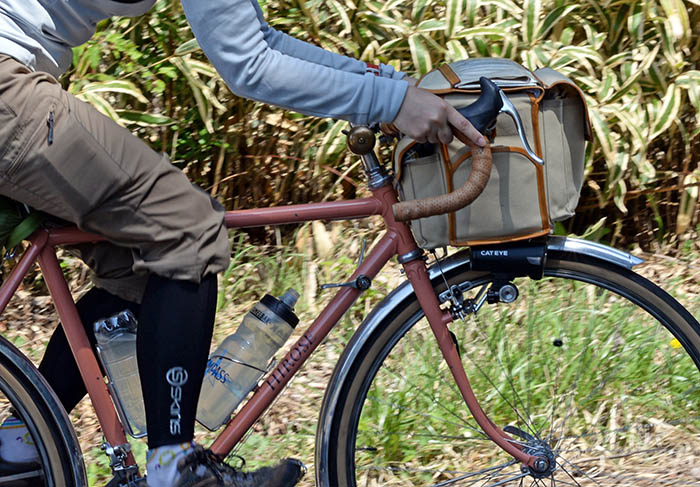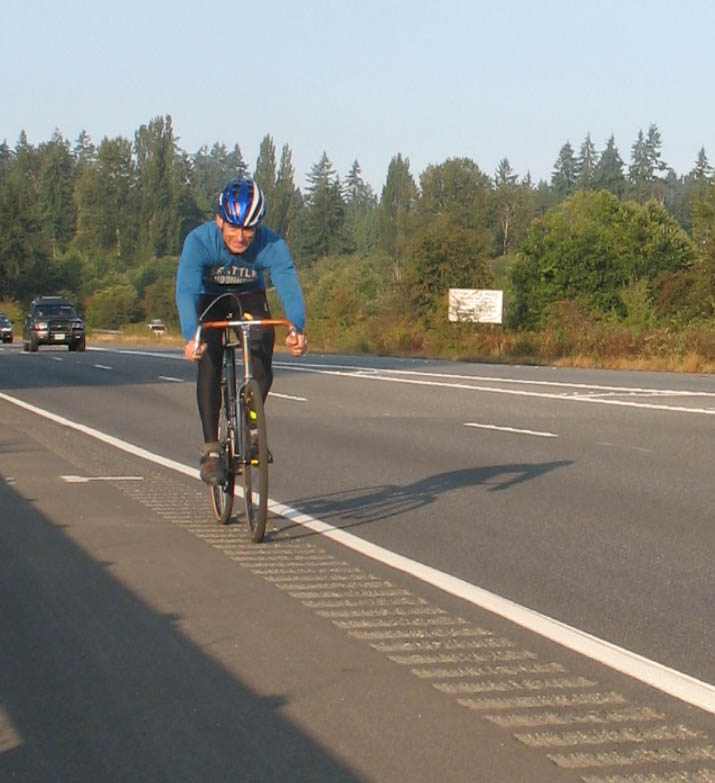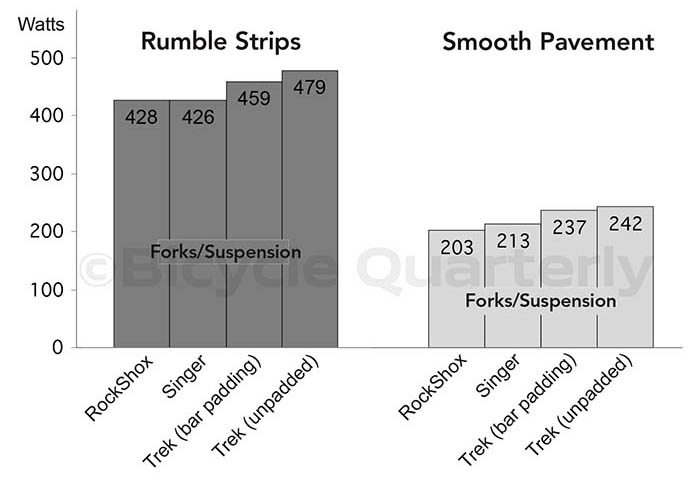Myths Debunked: Fork Blades DO Flex

When we first started talking about shock absorption and fork blades, it was commonly believed that fork blades didn’t flex significantly. Experts told us: “All the flex in a fork is in the steerer tube, where the lever arm is longest.” And yet, when we rode bikes with flexible fork blades, they clearly took the edge of bumps. Was this another myth in need of debunking?
We designed a simple test to measure the flex of fork blades. By combining a small bag-support rack with the hoop of a low-rider, we could easily visualize (and measure) the flex of the lower fork blades: The two racks will move against each other only if the fork flexes between their attachments – in the lower 2/3 of the legs. (If the flex occurs higher on the fork, both racks will move in unison.)
The video above shows this test on my ‘Mule’ with its flexible Kaisei ‘TOEI Special’ blades. As the camera zooms in, you can see how much the fork blades actually flex. That is what takes the edge off bumps that are too large for the tires to absorb.

And since more comfort equals more speed, flexible fork blades make your bike faster, too – even on smooth roads. We quantified that when we ran a stiff fork, a suspension fork and a fork with flexible blades both on rumble strips and on the brand-new, ultra-smooth pavement next to them (above).

It didn’t come as a great surprise that compared to our stiff fork (Trek unpadded), the suspension fork (RockShox) and the flexible steel fork (Singer) each saved about 50 Watts on the rough surface of the rumble strips (left graph).
What we didn’t expect was that both flexible forks saved somewhere between 20 and 35 Watts on the smooth pavement (right graph). That is a very significant difference in power output – in fact, it was large enough to pass the all-important test of statistical significance.
In the graphs above, you notice a fourth bar: Trek (bar padding). We also tested thick foam on the handlebars to simulate the maximum padding you could put on your bars, but we found that the effect was much smaller than that of the forks’ suspension. It was not statistically significant, and neither were the small differences between the RockShox and Singer forks.
So it’s clear that suspension or flexible fork blades like the Kaisei ‘TOEI Special’ make a bike more comfortable and faster. That brings us to the next question: Do flexible fork blades negatively affect the handling of the bike? Read the next post in this series to find the answer!
Further information:
- Bicycle Quarterly 23 with our original experiment measuring the flex of fork blades
- Bicycle Quarterly 29 with our rumble strip tests of suspension losses that included forks, tires and other equipment
- Other posts in the Myths in Cycling series.
- The Alex Singer fork in the original test used old Reynolds 531 ‘Super Resilient’ fork blades that are no longer made. The Kaisei ‘TOEI Special’ blades have the same diameter and profile with slightly thinner walls, making them yet a bit more flexible.
- The RockShox fork was a brand-new Ruby. With age, the performance of the suspension fork may deteriorate.
- Update 11/17/2020: We’ve just published our new book ‘The All-Road Bike Revolution’ with all the research that has changed cycling in recent years. Find out why wide tires can be fast, how to find a frame that optimizes your power output, and how to get a bike that handles like an extension of your body. More information is here.


